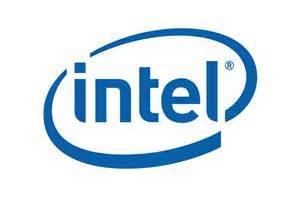Intel Atom E3900 processor aims to enable new smart and connected IoT devices

The Internet of Things (IoT) is linking billions of smart and connected devices to each other, creating a wave of change in how we live and work. The number of connected machines is expected to dramatically increase – by 2020, 50 billion devices (Cisco IBSG) will create 44 zettabytes (of 44 trillion gigabytes) of data annually, and will require much more processing power at the edge, and in the fog to network in order to maintain viability.
To support these experiences, at IoT Solutions World Congress, Intel is announcing the latest generation of the Intel® Atom™ processors for IoT applications. The new Intel Atom processor E3900 series is designed from the ground up to support the rapid development and the growing complexity of IoT businesses. The result is a processor exceptionally capable of delivering on performance, processing and scalability.
Inside its compact form factor, customers can reportedly achieve new levels of security, determinism, and image and video processing power. This will help fuel innovative IoT applications across industrial, video, manufacturing, retail and more.
The company is also announcing details of its Intel Atom processor dedicated for automotive applications. The A3900 series is designed to power a new generation of in-vehicle experiences. The automotive series will enable a complete software defined cockpit solution that incudes in-vehicle infotainment (IVI), digital instrument clusters and advanced driver assistance systems (ADAS) – all in a single, compact and cost-effective SoC. The A3900 series will allow car makers to offer new levels of determinism for real-time decision-making required in next-generation cars. It is currently sampling with customers and will be available in Q1 2017.
Processing and sensor integration at the edge
The Intel Atom processor E3900 series aims to make the edge and fog more intelligent – enabling many of the processing needs to take place at or near the data sensor and alleviating the need to push all processing to the data center. Fog computing, also known as fog networking, is a decentralised computing infrastructure in which computing resources and application services are distributed in the most logical place at any point from the data source to the cloud.
As an example, consider traffic cams and sensor data. There are significant downsides to sending data to a server for analysis, such as loss due to video compression and time spent in travel, versus having the ability to process data at the device. In the automotive industry, the software-defined cockpit is also where this edge computing capability can make a difference.
The ability for a single system to drive the digital gauges, navigation, and advance driver assist functions is the trend. It is important that backup sensors, bird’s-eye view parking or side collision alter function in a reliable response time, regardless of what the media or navigation system is doing at that time.
With more than 1.7 times more computing power over the previous generation, the E3900 Series is designed to enable faster memory speeds and memory bandwidth to provide the efficient processing capability needed for edge to cloud network computing. Built into a compact flip chip ball grid array (FCBGA) and featuring 14 nanometer silicon technology, the Intel Atom processor E3900 series is perfect for a wide range of IoT applications, where scalable performance, space and power are at a premium. Additional new features and capabilities include:
- Pristine graphics for media-rich applications: The processor series features Intel’s ninth-generation graphics engine that improves 3-D graphics performance by 2.9 times over the previous generation, and supports as many as three independent displays.
- Advanced image processing to support all types of vision system needs: The E3900 series has four vector image processing units, resulting in better visibility, quality video in low light, noise reduction, and color and detail preservation.
- Faster connections to keep devices in sync: Intel® Time Coordinated Computing Technology coordinates and synchronises peripherals and networks of connected devices. By synchronising clocks inside the system on a chip (SoC) and across the network, Intel Time Coordinated Computing Technology can achieve network accuracy to within a microsecond.
Intel is working with a diverse ecosystem of IoT device and equipment manufacturers, software vendors and OEMs, including Delphi*, FAW*, Neusoft*, Hikvision* and others across a variety of industries.
Comment on this article below or via Twitter @IoTGN
